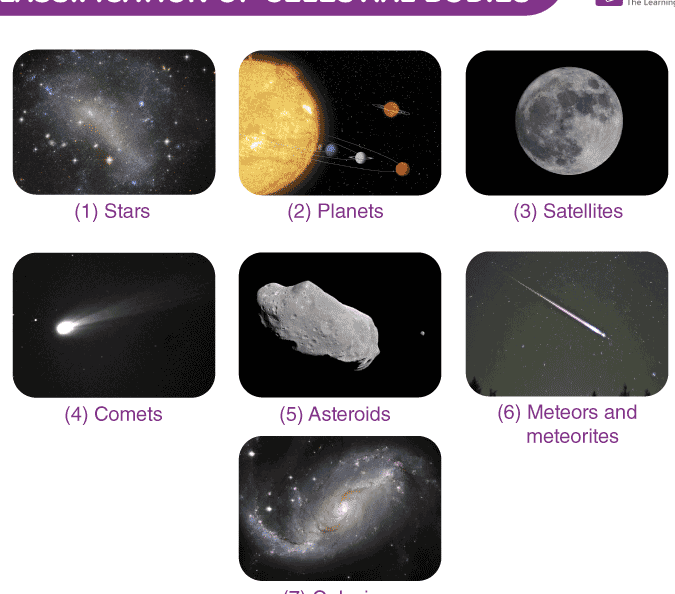In the year 1930, on the 18th of February, Clyde Tombaugh, an astronomer, made an astounding discovery. He found the ninth celestial body in our solar system. However, this celestial body, known as Pluto, has had quite a tumultuous journey. Today, we present to you some of the most fascinating details about it.
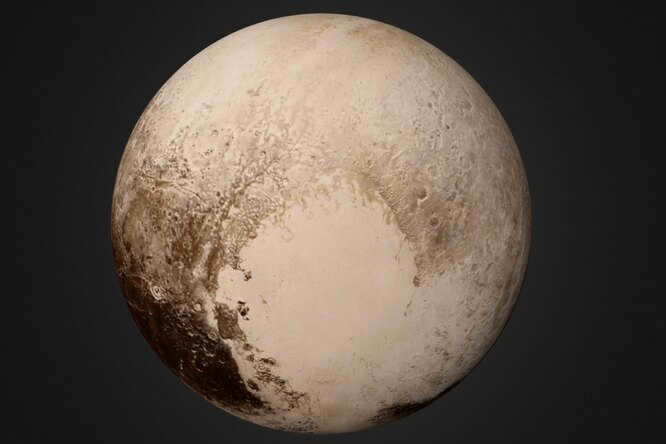

Pluto received its name from an 11-year-old girl
When Bernie, Venetia’s grandfather, informed her about the recent discovery of a planet, she proposed the name Pluto as a tribute to the Roman god of the Underworld. The choice seemed fitting since the planet Pluto, like the god, existed in the distant corners of the solar system. Bernie then forwarded the suggestion to his friend, an astronomy professor at Oxford University.
Pluto’s size is larger than previously believed, but smaller than Earth’s Moon
According to recent measurements from the New Horizons spacecraft, Pluto has a diameter of 2,370 kilometers. In comparison, Earth’s Moon has a diameter of 3,475 kilometers. This means that Pluto is approximately 18.5% the size of Earth.
Pluto has a unique feature on its surface
NASA has recently revealed images captured by the New Horizons probe, showcasing a distinct formation on Pluto’s surface. This formation takes the shape of a heart and spans approximately 1,600 kilometers in diameter. Interestingly, NASA’s analysis suggests that the interior of this heart-shaped feature appears to be somewhat cloudy, which could potentially indicate the presence of ongoing geological activities.
There is a lack of consensus regarding the classification of Pluto as a dwarf planet
The recent revelation that Pluto may be larger than previously thought, as evidenced by images from the New Horizons spacecraft, has generated excitement among proponents of Pluto’s planetary status. Those who argue that Pluto should be considered a full-fledged planet believe that its relegation to dwarf planet status is primarily due to its size. However, the reclassification of Pluto from planet to dwarf planet was based on the fact that it is not unique in its composition. Rather, it is just one of many similar objects within the Kuiper Belt.
The New Horizons spacecraft, which weighs 450 kilograms and cost $700 million, is slightly larger than a grand piano. In 2015, after a nine-year journey of 4.8 billion kilometers, it reached Pluto and captured the most detailed images of the planet to date.
Disney’s dog Pluto was actually named after the planet
Contrary to popular belief, Disney’s dog Pluto was named after the planet, not the other way around. The dog made its debut on screens the same year Pluto was discovered. Some Disney animators speculate that Walt Disney chose the name to generate excitement for the widely publicized topic.
TechInsider Online Edition
Founder of “Fashion Press” LLC: 119435, Moscow, Bolshoi Savvinsky per. 12, p. 6, floor 3, room II. 6, floor 3, room II;
Editorial office address: 119435, Moscow, Bolshoi Savvinsky per. 12, p. 6, str. 6, floor 3, room II; Editorial office address: 119435, Moscow, Bolshoi Savvinsky per. 6, floor 3, room II;
Editor-in-Chief: Nikita Vasilenok
Editorial office e-mail address: [email protected]
Editorial office phone number: +7 (495) 252-09-99
Information product label: 16+
The network edition is registered by the Federal Service for Supervision in the Sphere of Communications, Information Technologies and Mass Media, registration number and date of decision on registration: series EL No. FS 77 – 84123 dated November 09, 2022.
© 2007 – 2023 “Fashion Press” Ltd.
By placing content on the Website, the User grants “Fashion Press” LLC non-exclusive rights to utilize, replicate, distribute, create derivative works, as well as to showcase the content and bring it to the attention of the public free of charge.
Discovered in 1930, Pluto was believed to be the smallest and ninth planet in orbit around the Sun. It served as the outermost planet in the solar system. However, on August 24, 2006, the International Astronomical Union (IAU), a professional organization of astronomers, concluded that Pluto does not meet the criteria to be classified as a planet.
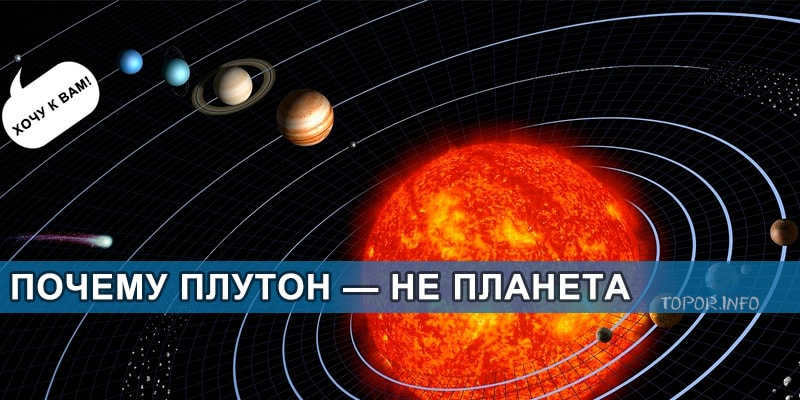
The Current Classification of Pluto
According to current scientific understanding, Pluto is now classified as a dwarf planet.
A dwarf planet is a celestial object that orbits the Sun, possesses enough mass to form a spherical shape due to gravitational forces, but is not large enough to clear its orbit of other objects.
Pluto shares more similarities with a comet than a traditional planet.
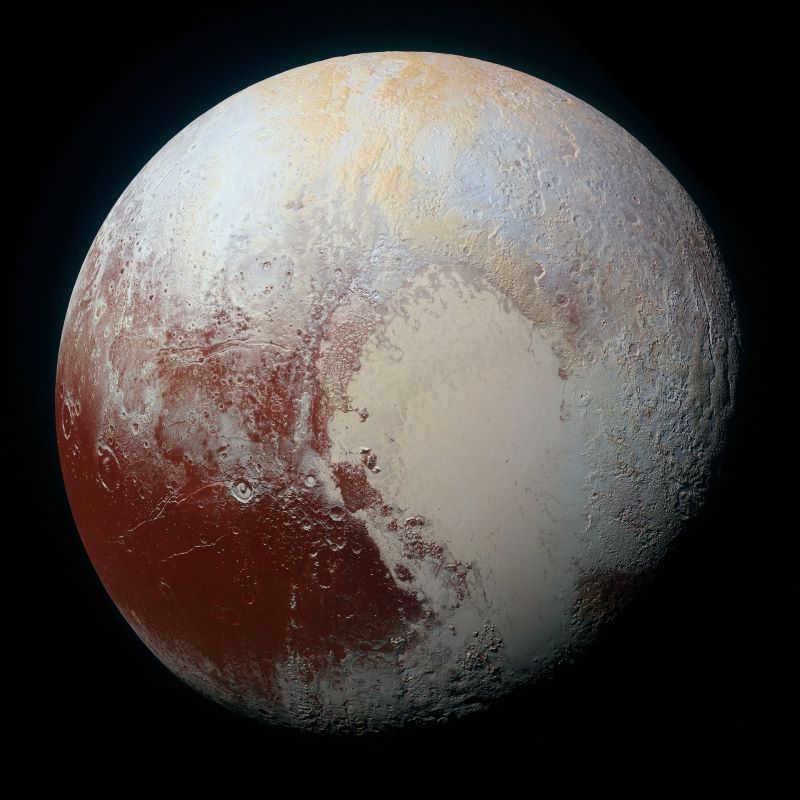

What we understand about Pluto
Pluto approaches the Sun at different times, getting as close as 4.4 billion kilometers and as far as 7.4 billion kilometers. It is located in an area of space known as the Kuiper Belt and is the largest object within it.
The Kuiper belt is a mysterious, disk-shaped region that exists beyond the planet Neptune. It contains numerous small icy objects that are similar in size and composition to Pluto.
Pluto is roughly three times smaller in volume than Earth’s moon. Its surface area measures 17.7 million square kilometers. This is slightly larger than Russia’s 17.1 million square kilometers.
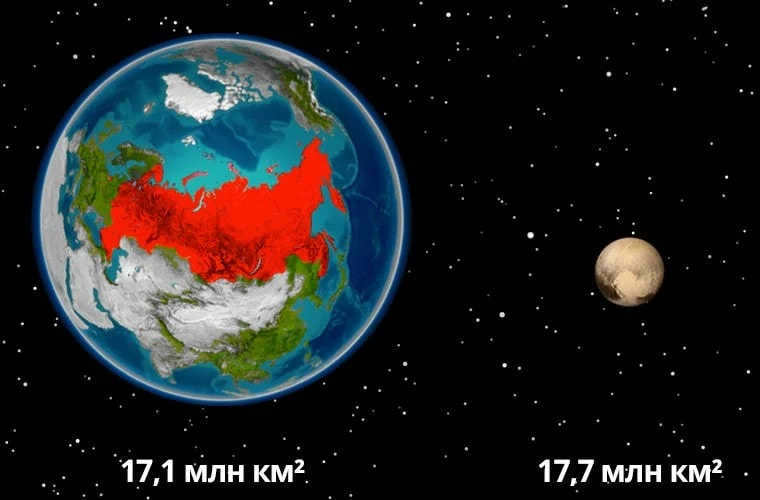
It takes approximately 248 years for Pluto to complete a full orbit around the sun. Additionally, the length of one day on Pluto is equivalent to about 6.5 days on Earth.
Pluto is accompanied by five moons, namely Charon, Nycta, Hydra, Kerber, and Styx. The combination of Pluto and Charon is often referred to as a “double planet” due to their similar mass, close proximity to each other, and the fact that the center of mass of their combined system is situated outside of Pluto.
Reasons behind the emphasis on Pluto’s status initially
In the year 2003, astronomers spotted a new celestial object situated beyond Pluto, initially believed to be the tenth planet. The size of this object was initially estimated to be larger than Pluto, however, it is now known that this is not the case. This newly discovered object was given the name Erida.
The discovery of Erida sparked a significant debate regarding the criteria used to define a planet and whether or not Pluto should be classified as one. Ultimately, a resolution was passed, establishing fresh criteria for determining planetary status. Due to their size and irregular orbits, neither Pluto nor Erida met these criteria, resulting in their classification as dwarf planets.
Pluto is also commonly referred to as a plutoid. A plutoid is a type of dwarf planet that resides farther from the sun than the planet Neptune within our solar system.
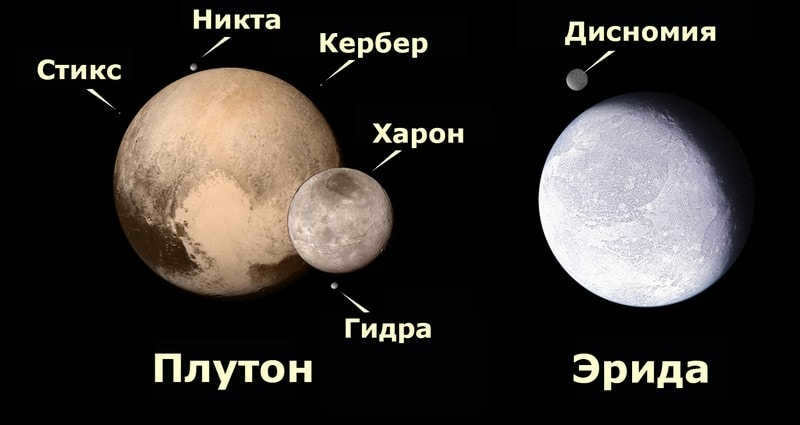

Reasons why Pluto lost its planet status
According to the resolution, a celestial body can be classified as a planet if it is spherical in shape, orbits the Sun, and has cleared its orbit of other objects. Even though Pluto meets the first two criteria, it fails to meet the third one, as it is unable to clear its orbit like the other eight planets. Let’s delve deeper into this.
During the formation of planets, they become the dominant gravitational force in their orbit around the Sun. If smaller objects come in their path, they either get absorbed or captured by the planet’s gravity. In Pluto’s case, there are objects of similar mass in its orbit, which forces it to coexist with them.
Pluto’s status continues to captivate astronomers despite its dwarf planet classification
Even though Pluto is categorized as a dwarf planet, it continues to intrigue astronomers. In fact, NASA has gone as far as sending the New Horizons spacecraft to investigate this icy celestial body. Upon its arrival in 2015, the spacecraft captured the first-ever high-resolution images of Pluto’s surface. Irrespective of its official classification, Pluto remains a subject of intense study and fascination among astronomers.
Show your appreciation to the author of this article by making a donation of 30 rubles on Boosty. Your contribution will help in the dissemination of similar content.
Indeed, it is a fact. Pluto is no longer classified as a planet. Were you not aware? This “recent” information came to light just over a decade ago. Surprisingly, approximately half of the adult attendees at planetariums are caught off guard by this revelation. However, children are much more informed, confidently stating that there are eight planets in our solar system (Mercury, Venus, Earth, Mars, Jupiter, Saturn, Uranus, Neptune). Yet, the question of why Pluto lost its planetary status remains unanswered. Maria Borukha, an astronomer and lecturer at the St. Petersburg Planetarium, sheds light on the reasons behind this decision and identifies those responsible for it.
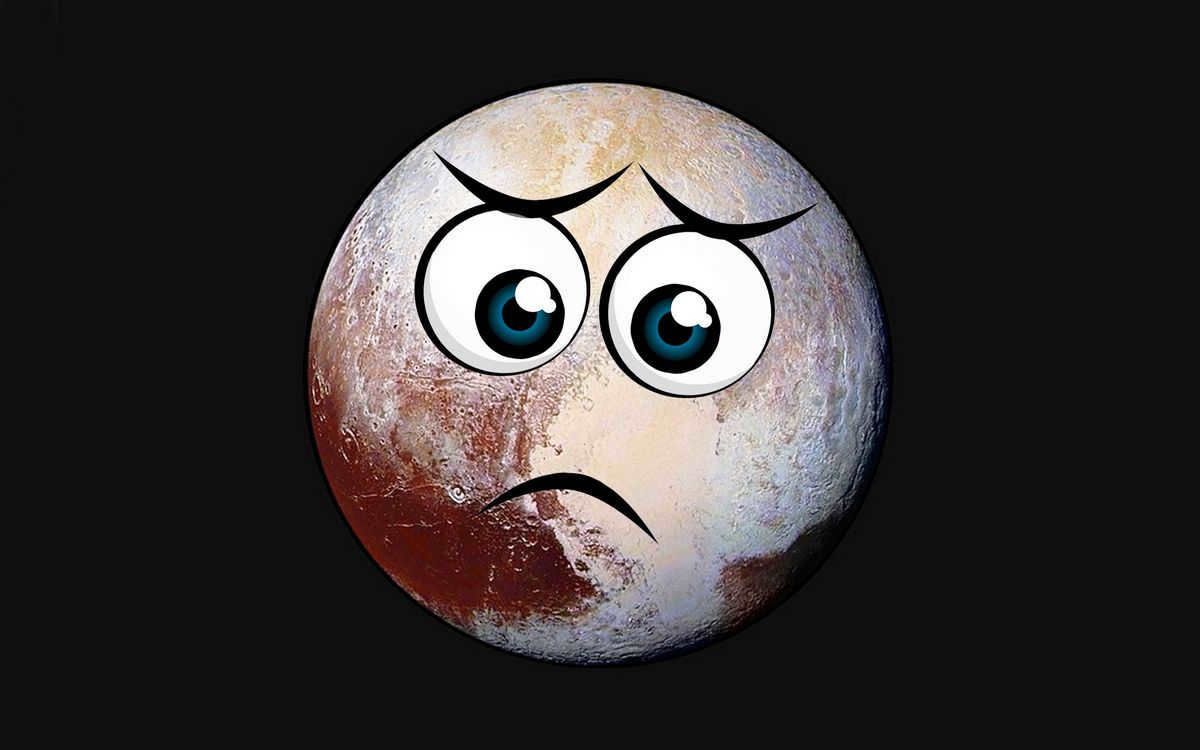

What happened to Pluto in 2006?
There is a belief that Pluto left the solar system. However, rest assured that Pluto is still present and has not departed from us. It continues to orbit the Sun with a period of 248 Earth years and will likely continue to do so for a very long time.
The change lies in the terminology used by astronomers to classify objects. They made the decision to no longer refer to Pluto as a “planet”.
Similarly with Pluto: In 2006, the classification of Pluto changed from being called a “planet” to being referred to as a “dwarf planet”. It is worth noting that dwarf planets (indicated by arrows in the diagram below) are not considered a subclass of “planets” (they are clearly distinguishable in the image) – they are a distinct category of objects in the Solar System, which was established in 2006. Currently, there are five recognized dwarf planets: Ceres, Pluto, Haumea, Makemake, and Erida.
What sets planets apart from dwarf planets?
As depicted in the illustration above, one key distinction is that all dwarf planets are smaller in size compared to planets. Therefore, one might argue that Pluto is simply too small or light to qualify as a true planet. Surprisingly, this determination was only made in 2006?
No, the size of Pluto had been accurately known even before 2006, allowing scientists to conclude that it was significantly smaller than Mercury (which is now considered the smallest planet).
Furthermore, there are numerous celestial bodies in the solar system, some of which are larger than Mercury, that are not classified as planets (such as Ganymede – Jupiter’s largest moon). Additionally, our Moon, a well-known cosmic entity, is indeed smaller than Mercury but still larger than Pluto!
Indeed, if the Moon were to exist independently from the Earth and orbit the Sun, it would be eligible to attain the designation of a planet. As it stands, it is currently classified as a satellite and it is unlikely that this categorization will be revised in the foreseeable future.
We possess an intuitive understanding of this concept and commonly refer to the Moon as a satellite of the Earth and the Earth as a satellite of the Sun, implying the movement of one celestial body around another. However, the precise definition of the term “satellite” has proven to be so challenging to formalize that the International Astronomical Union has yet to establish an exact definition for the word.
From this, we can deduce that in order to be classified as a planet, it is not only necessary to be a sufficiently large celestial body, but it is also imperative to be a satellite of the Sun rather than another celestial entity.
However, Pluto meets this definition! Is it possible that, as a massive object, it revolves in a unique orbit around the Sun?
Using this illustration, you can almost accurately visualize the proportion of the solar system and the placement of the planets’ orbits. It is remarkable that Pluto’s orbit is highly inclined – as much as 17 degrees compared to the plane where the Earth’s orbit lies. Following is Mercury, with only a 7-degree inclination.
In addition to its unusually large inclination, Pluto’s orbit is more elongated than the planets’ orbits, although the difference from Mercury in this aspect is minor.
Perhaps this holds the solution: Could it be that Pluto’s orbit is too extensively elongated and inclined?
Now let’s examine the trajectories of celestial bodies situated farther away from the Sun than Pluto (indicated in red in the diagram below). You can get a clearer view of this using the provided resource.
It becomes apparent that the orbits of all four bodies beyond Neptune’s trajectory – Pluto, Haumea, Makemake, and Erida – are significantly tilted and not perfectly circular. Therefore, it seems that we have indeed found the correct answer. However, upon closer inspection, another orbit emerges at the center of the image. This is the orbit of Ceres, which lies between the orbits of Mars and Jupiter, relatively close to being circular and inclined at a mere 10 degrees.
Hence, the characteristic of elongated and highly inclined orbits is not universally shared among all dwarf planets.
It appears that we must take into account not only the physical characteristics and orbits of celestial bodies, but also their surroundings. The majority of small bodies within the Solar System are asteroids.
Within this region, known as the main asteroid belt, resides one of the dwarf planets, Ceres. It is worth noting that the classification of Ceres has been revised: previously considered an asteroid (as it was the first of its kind to be discovered), it is now recognized as one of the dwarf planets.
The distinguishing factor between asteroids and dwarf planets lies in their shape. Dwarf planets possess enough mass to assume a spherical shape, whereas asteroids, being lighter bodies, have irregular shapes.
Four other dwarf planets exist in the outer reaches of the Solar System, situated beyond Neptune’s orbit. Coincidentally, this region is also home to the Kuiper Belt, which is another belt consisting of asteroids.
To summarize, the primary distinction between dwarf planets and planets in the Solar System lies in the presence of asteroids near their orbits.
Nevertheless, both dwarf planets and planets possess a spherical shape and revolve around the Sun.
What led to the demotion of Pluto’s planetary status?
The notion that Pluto should no longer be considered a planet emerged at the start of the 21st century. After seventy years of being classified as the ninth planet, a series of findings of celestial bodies beyond Pluto, yet similar in size and mass, began to surface. The culmination of these discoveries was the identification of Erida in 2005 by a team of scientists led by Michael Brown, who later penned the book “How I Killed Pluto”.
It turns out that Erida ended up being much larger than Pluto and even became a contender for the position of the 10th planet. The scientists faced a decision: either continue expanding the list of planets or come up with a definition of the word planet that would bring peace and stability to their field. They chose the latter option and devised the following definition of the word planet:
- An object that orbits the Sun.
- It must be massive enough to naturally form a roughly circular shape due to gravitational forces and be in a state of hydrostatic equilibrium.
- It must also have cleared its orbit of other objects.
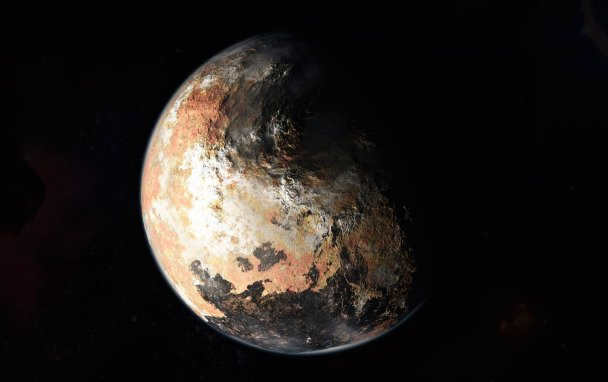
“Pluto’s advocate,” Philip Metzger from the University of Central Florida, argues that recent research challenges the validity of the current classification system that led to the “demotion” of Pluto as a celestial body. As a result, the status of Pluto itself should be reevaluated.
Historical Background of the Former Planet
Speculations regarding the presence of a planet beyond Neptune emerged towards the end of the 19th century. The official discovery of this planet took place in 1930, thanks to the efforts of American astronomer Clyde Tombaugh.
Pluto is situated approximately 5.9 billion kilometers away from the Sun, on average, within the Kuiper Belt. This region is a vast and relatively unexplored cluster of celestial bodies that formed during the early stages of the solar system’s development. In January 2006, NASA launched the New Horizons spacecraft, which carried a price tag of $700 million. However, it only conducted a close flyby of Pluto in 2015, by which time the former planet had already been “reclassified” and the solar system had only eight recognized planets.
The reason for this reclassification lies in the fact that in 2006, the International Astronomical Union introduced a new definition for the term “planet.” According to this definition, a celestial body must meet the following criteria to be considered a planet:
– The Sun is the center of the solar system, and planets revolve around it. This means that a planet cannot be a satellite of another celestial body. As a result, the Moon, Ganymede, and other similar bodies cannot be considered planets.
– In order for a celestial body to be considered a planet, it must have enough mass to become spherical under the influence of its own gravity.
– Additionally, a planet must “clean up” its orbit by being heavy enough to prevent other significant mass celestial bodies from orbiting it.
Pluto does not meet the last criterion because it shares its orbit with Charon, which is smaller and lighter. However, the common center of their rotation is located between the two bodies, rather than within Pluto itself. As a result, Pluto is classified as a “dwarf planet”.
Astronomer Michael Brown, renowned for reclassifying Pluto as a “dwarf planet,” has authored a captivating book titled “How I Killed Pluto” that delves into the research behind this decision, which has garnered overwhelming support from the astronomical community. In this thought-provoking work, Brown elucidates that the categorization of planets not only determines their count within our solar system but also aids in accurately assessing the evolution of the universe.
To elaborate further, the presence or absence of planets in different star systems signifies disparate stages in their development. Conversely, by comprehending the trajectory of a star system, we can deduce whether it is worthwhile to search for exoplanets (i.e., planets beyond our solar system) – a crucial factor in efficiently allocating resources for the exploration of extraterrestrial life.
Reinstating Pluto
Metzger reviewed the scientific literature spanning two centuries and came to the conclusion that the notion of orbital “purification” was employed just once (in 1802) to delineate the definition of a planet, and that this principle was later found to be unsubstantiated. Furthermore, during Galileo’s era, Saturn’s moon Titan and Jupiter’s moon Europa were also referred to as planets, as pointed out by the scientist.
Metzger proposed a revision to the third factor, suggesting that the second factor should focus on whether the celestial body possesses sufficient mass to cause it to assume a spherical shape due to its gravitational pull. The spherical shape of the celestial body is also indicative of ongoing geological activities within the planet. In this regard, Pluto is considered more dynamic than even Mars. The dwarf planet exhibits a diverse atmosphere, the existence of organic compounds, evidence of past lakes, and a multitude of satellites.
Exploring the Depths of Darkness
As of now, the official count of planets in the Solar System stands at eight. While Pluto may have a chance to regain its status as a planet, there is a possibility that the ninth spot could be filled by a mysterious celestial body even farther away from Earth.
Contrary to popular belief, Michael Brown, the author in question, did not intend to exclude Pluto entirely. According to his book, he was actually searching for new planets beyond Neptune’s orbit and discovered several that were similar in size to Pluto. The decision to differentiate between planets and non-planets ultimately led to the new classification in 2008, which labeled Pluto as a dwarf planet.
However, Brown harbored a vision of discovering an authentic planet beyond the orbit of Neptune. In January 2016, he and his colleague from the California Institute of Technology, Konstantin Batyginov, postulated the presence of a ninth planet X within our solar system. This deduction arose during their investigation into the trajectories of objects in the Kuiper Belt. Based on their computations, these objects experienced gravitational effects from a celestial entity four times larger than Earth and possessing ten times more mass.
The enigmatic celestial entity could potentially be situated 1000 times farther from the Sun compared to Earth. Moreover, its surface is bathed in a stream of sunlight that is a million times fainter than what Earth receives, hence why the planet has eluded detection through telescopes.
Ever since the calculations regarding the existence of the Ninth Planet were published, there has been ongoing debate. Some scientists argue that the changes in object orbits, which were previously attributed to the presence of the Ninth Planet by Batygin and Brown, could be the result of simple asteroid collisions.
Based on current knowledge, it is difficult to determine the exact number of planets in our solar system. It could be eight, nine (if the Ninth Planet theory is proven or if Pluto’s status is reevaluated), or even ten if both Pluto and Planet X are officially recognized as planets.
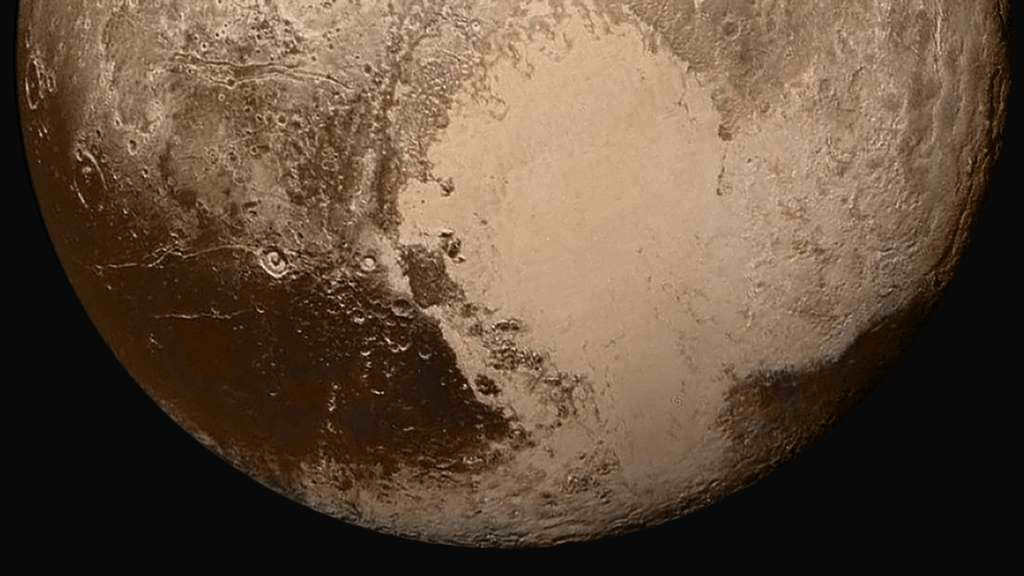
What exactly is Pluto? Is it a planet or just another trans-Neptunian object (dwarf planet)? The debate surrounding Pluto’s planetary classification is undeniably one of the most contentious issues among scientists and space enthusiasts. For over a decade, researchers have been engaged in a heated discussion on how best to classify Pluto.
Pluto, which was first observed in February 1930 by American astronomer Clyde W. Tombaugh, quickly gained planetary status and became the ninth planet in our solar system. In 1931, approximately one year after its discovery, a group of scientists calculated Pluto’s mass and found it to be strikingly similar to that of Earth.
In 1948, planetologist Gerard P. Kuiper conducted his own investigations and found that the mass of Pluto was only about 1/10th of that of Earth. Two additional studies were carried out, and in both cases, the estimated mass of Pluto was significantly reduced.
By 1992, a number of new trans-Neptunian objects with similar characteristics to Pluto had been discovered. A significant turning point came in 2005, when a group of researchers found a trans-Neptunian object called Erida that was even more massive. This discovery led to questions about Pluto’s planetary status.
This finding sparked a contentious debate within the astronomical community regarding whether Erida should be classified as the tenth planet or if Pluto should be reclassified as a dwarf planet.
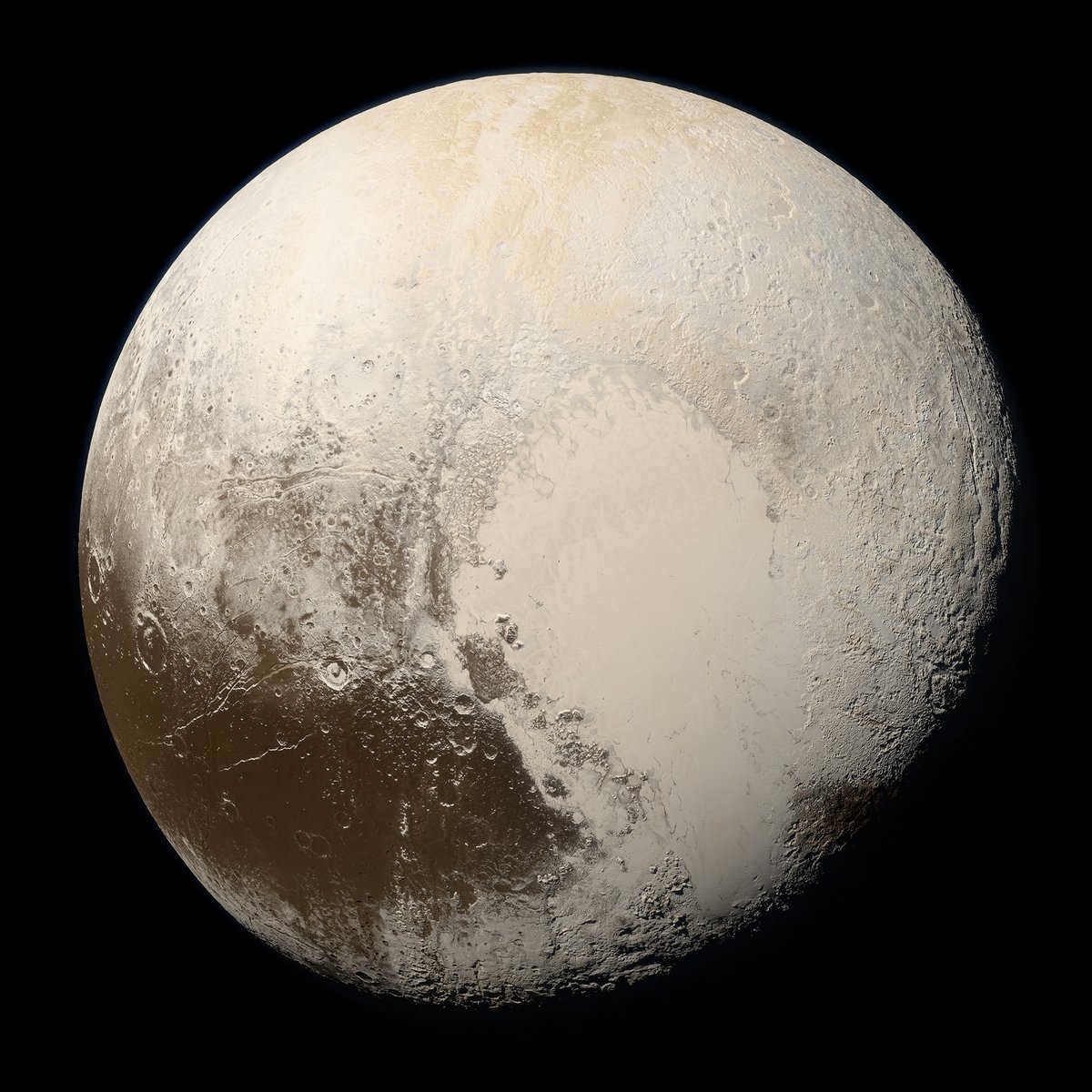
The crucial step was finally taken in August 2006, when the International Astronomical Union (IAU) made a resolution. According to this resolution, there are three requirements that an object in the solar system must meet in order to be classified as a planet.
These requirements are:
1. The object in question must orbit around the Sun.
2. It must have enough mass to be spherical; its own gravity must shape it into a well-defined (hydrostatic equilibrium) state.
3. The object must have cleared its orbit of any other non-satellite celestial bodies.
The last clarification about clearing the orbit was added by the IAU, which means that there are no other celestial bodies in the planet’s orbit besides satellites.
The Assembly made a clear declaration stating that Pluto should no longer be considered a planet. It only meets the first two requirements that were previously used, but it does not meet the new criterion. As a result, its classification has been changed to that of a “dwarf planet”. Additionally, Eridu, Ceres, and later Makemake and Haumea have also been placed in this same group.
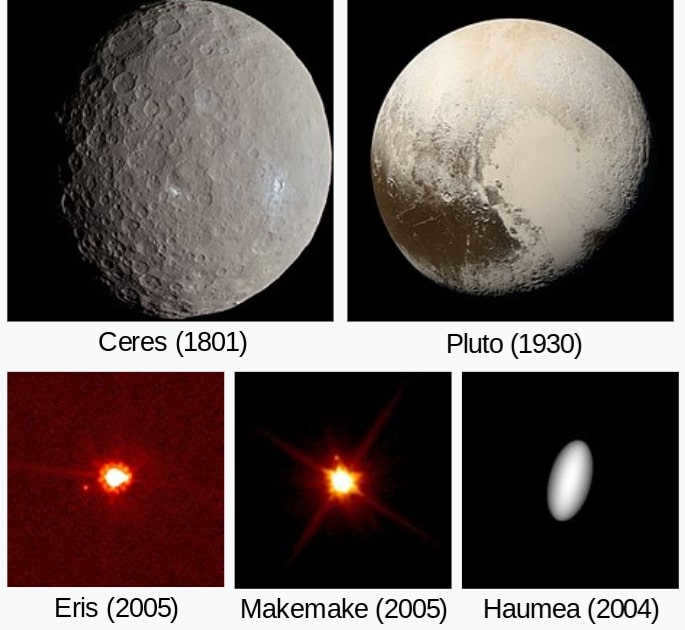
While the resolution received a positive response from members of astronomical societies worldwide, it also faced criticism from numerous astronomers. One of the leading opponents of the IAU resolution is Alan Stern, the current principal investigator of the New Horizons mission.
Stern mocked the decision, stating;
“The introduced definition is fundamentally flawed. As a scientist, I feel ashamed.” – Alan Stern.
Ever since Pluto was reclassified, there has been a plethora of research and development that has shed new light on this controversial topic. A recent study conducted in September 2018 revealed that Pluto has a highly intricate geology, making it a more dynamic celestial body compared to other planets within our solar system.
Below, we have curated a collection of fascinating facts about Pluto.
Planet Profile
16. Clyde William Tombaugh’s Quest for Planet X
The quest for Planet X began in the 1840s, when a number of astronomers, including Urbain Le Verrier, hypothesized the existence of an unknown planet that disrupted the orbits of the known planets. Inspired by these theories, businessman and explorer Percival Lowell established the renowned Lowell Observatory in 1906, dedicating it to the search for this enigmatic celestial body, which he dubbed “Planet X”. Following Lowell’s passing, the search continued in 1929 under the guidance of a young 23-year-old astronomer named Clyde Tombaugh.
15. The name Pluto comes from the Greek god of the underworld
According to classical Greek mythology, Pluto is known as the ruler of the Underworld. This character first appeared in ancient Greek literature, including the works of Plato and other playwrights. The name “Pluto” was actually suggested by a young schoolgirl named Venetia Burney from Oxford, England. Venetia was deeply fascinated by ancient mythology.
Venetia’s suggestion was eventually passed on to her grandfather, who then shared it with an astronomy professor. The professor, in turn, sent the name to his colleagues at Lowell Observatory in the United States.
14. One spacecraft has already made a visit to it
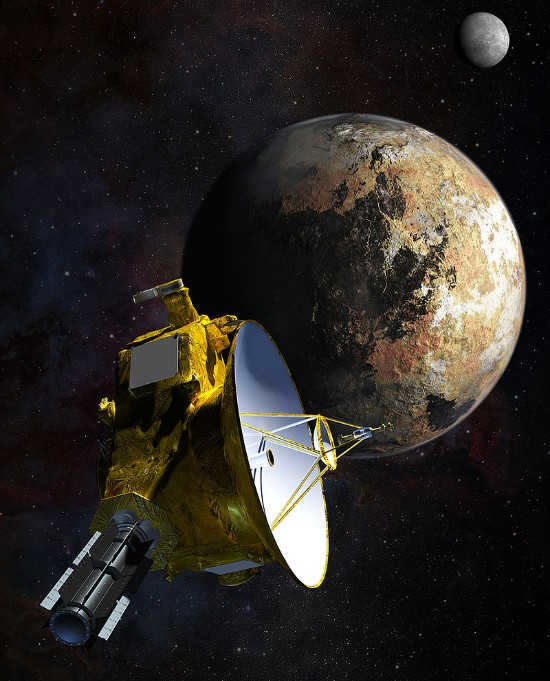
“New Horizons, a spacecraft launched by NASA in 2006, is the unparalleled vessel that embarked on a journey to investigate the frigid and remote dwarf planet. In January 2015, the probe had its inaugural encounter with Pluto. During the subsequent six months, New Horizons approached Pluto, capturing numerous images and invaluable data along the way.
Following the successful completion of its initial mission, the New Horizons expedition expanded its scope to encompass other celestial bodies in the nearby Kuiper Belt. It is worth noting that New Horizons holds the distinction of being one of the most far-flung human-made objects in outer space. Presently, it is voyaging towards the Sagittarius constellation.”
13. The biggest dwarf planet in the solar system
After the finding of Eridas in 2005, Pluto has taken on the role of the second most substantial dwarf planet, while still holding its title as the largest in the solar system. Consequently, Pluto is now considered the ninth largest and tenth most substantial object that revolves around the Sun. In contrast, the smallest dwarf planet is Ceres, which was first detected in 1801.
12. Pluto’s size compared to moons
It is common knowledge that Pluto is significantly smaller than all the known planets in our solar system. However, what many people may not realize is that Pluto is also smaller than some moons or planetary satellites. These satellites include Ganymede, Callisto, Io, Europa, Titan, and Triton.
Pluto’s diameter is only 2376 km, which is approximately 66% of Earth’s diameter. Additionally, its mass is 1.303×1022 kg, representing only about 0.22% of Earth’s mass. Over time, Pluto’s total surface area will eventually be comparable to that of Russia.
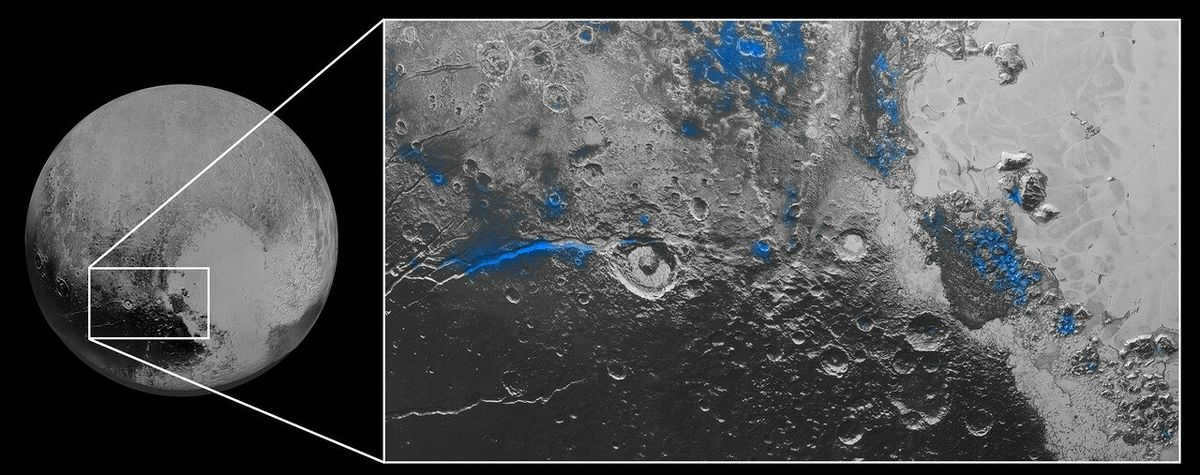
One of the remarkable findings made by the New Horizons spacecraft is the detection of water ice on the surface of Pluto, which is distributed more extensively across its terrain than previously anticipated. These icy formations consist of nitrogen, methane, or carbon monoxide. Furthermore, the mountains on Pluto are composed of water ice.
A number of scientists have theorized the presence of a subterranean water ocean beneath the exposed water ice, potentially sustained by ongoing internal heating within Pluto. Nevertheless, it should be emphasized that the existence of a magnetic field on Pluto remains uncertain.
10. Temperature inversion on Pluto
There have been numerous studies conducted on the atmosphere of Pluto, revealing the possibility of a temperature inversion on this dwarf planet. One study, carried out in 2009, concluded that the average temperature of Pluto’s upper atmosphere, reaching around 100° K, is notably higher than its surface temperature.
However, more recent observations made by the New Horizons mission have revealed that Pluto’s upper atmosphere is actually much colder than previously believed, with temperatures around 70° K instead of the previously estimated 100° K. This discrepancy is likely attributed to the presence of methane on Pluto.
9. The atmosphere of Pluto remains remarkably stable
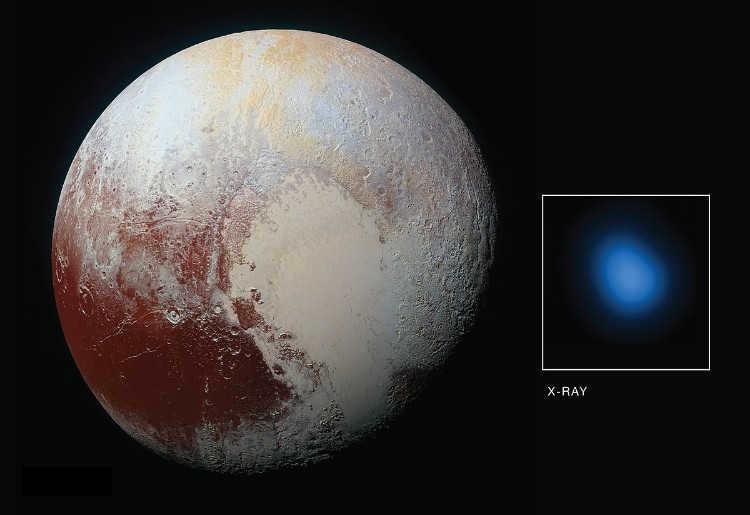
For a long time, it was believed that Pluto might not possess any atmosphere due to its small size and vast distance from the Sun. Additionally, it was thought that if it did have an atmosphere, the periodic changes in its orbit would gradually freeze it into the ground. However, a recent study conducted using data from the New Horizons mission challenges these notions.
Based on the study findings, it is now believed that the dwarf planet maintains a gaseous state throughout its orbit. Furthermore, scientists were able to determine its surface pressure, which is approximately 1 Pa, making it 100,000 to 1 million times lower than that of Earth. As of now, Pluto is the only known trans-Neptunian object with a confirmed atmosphere.
Pluto has the longest orbital period among all known planets, taking about 248 years to complete one revolution around the Sun. In addition, this dwarf planet has a distinctive orbital feature. Unlike the majority of other planets in our solar system that orbit the Sun in a flat plane, Pluto’s orbit is slightly inclined, with an angle of just over 17° relative to the plane.
7. An Unusual Connection with Neptune
When observing the paths of Neptune and Pluto from above, it might seem that they are on a collision course, but in reality, these two celestial bodies are strategically positioned to avoid any dangerous encounters. However, scientific research and computer simulations have suggested that this arrangement could change in the distant future.
The reason why Neptune and Pluto have never collided in the past can be attributed to Pluto’s 2:3 orbital resonance with Neptune. This means that for every three orbits Neptune completes around the Sun, Pluto only completes two. This unique orbital pattern acts as a safeguard against potential collisions between these planetary entities.
Interesting information
6. In contrast to the majority of planets in our solar system (with the exception of Uranus), the complete Pluto-Haron system is inclined on its side due to its significantly greater axial tilt (over 120°). As a result, the changes in seasons on Pluto are more extreme. Approximately 25% of Pluto’s surface is constantly shrouded in darkness, while another 25% is bathed in perpetual daylight.
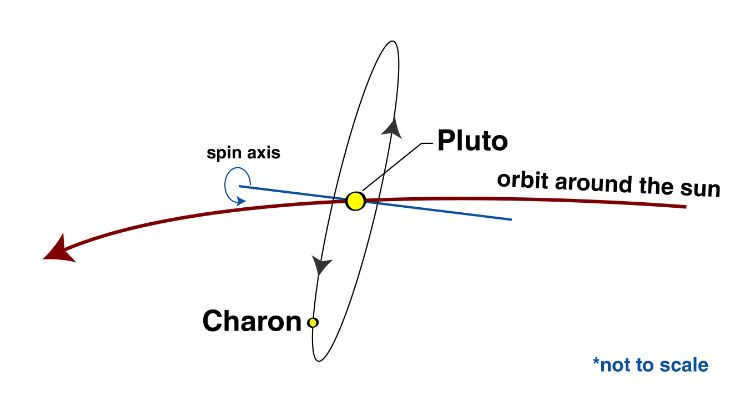
5. Pluto’s distance from Earth changes significantly due to its peculiar orbit around the Sun. When it is closest, Pluto is approximately 4.2 billion kilometers away, while at its farthest point, it is nearly 7.5 billion kilometers from Earth. New Horizons, the space probe, would take just under 10 years to reach this dwarf planet.
4. The Sun takes about 5.3 hours to reach Pluto when it is at a distance of 39.5 AU or 5.9 billion kilometers. On the dwarf planet, the sunlight is also about 2,000 times less intense compared to Earth.
3. The astronomical symbol for Pluto ♇ is formed by combining the letters P and L. This symbol represents the first two letters of the dwarf planet’s name and the initials of the astronomer Percival Lowell, who originally started searching for the planet beyond Neptune.
2. Pluto completes one revolution in just over 6 Earth days (6 days, 9 hours, and 17 minutes), making it the second slowest rotating celestial object in the solar system after Venus, which takes approximately 243 days to complete one revolution. On the other hand, Jupiter, the fastest rotating planet in the solar system, completes a rotation every 10 Earth hours.

